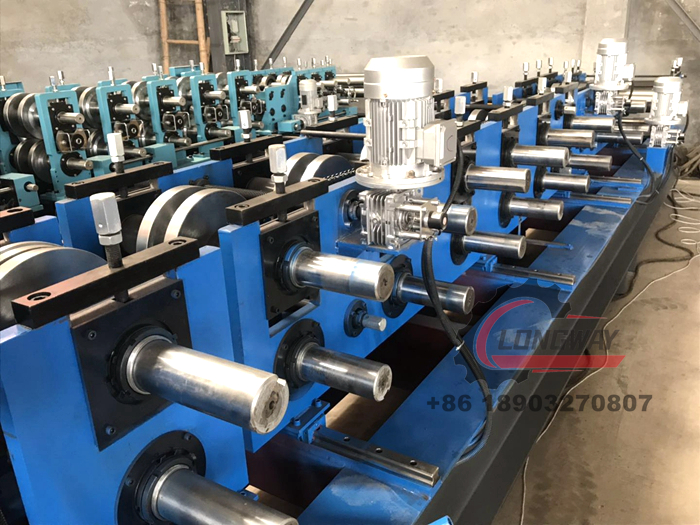rib panel forming machine
Understanding Rib Panel Forming Machines An Overview
Rib panel forming machines are a crucial component in modern manufacturing processes, particularly in the building and construction industry. These specialized machines are engineered to produce ribbed panels, which are widely used in roofing, walling, and various structural applications. This article delves into the workings, benefits, and advancements associated with rib panel forming machines, shedding light on why they are essential in today's construction and manufacturing landscape.
The Functionality of Rib Panel Forming Machines
At its core, a rib panel forming machine is designed to transform flat sheets of metal, usually steel or aluminum, into pre-defined ribbed shapes. The process begins with feeding a roll of metal sheet into the machine. The forming machine utilizes a series of rollers arranged in a progressive manner, each of which shapes the metal sheet incrementally.
1. Feeding The metal sheet is unwound from a roll and fed into the machine. This is usually automated to ensure precision and efficiency.
2. Forming Process As the metal sheet passes through the rollers, it undergoes a series of bending and shaping operations that create the characteristic ribs in the panel. The number of ribs, depth, and spacing can be customized based on the structural requirements.
3. Cutting After the forming process, the long ribbed metal sheet is cut to the desired lengths. Modern machines can incorporate automated cutting systems to enhance speed and accuracy.
4. Finishing Some forming machines also come equipped with features for surface finishing, painting, or coating, adding an additional layer of protection to the panels.
Benefits of Rib Panel Forming Machines
The efficiency and precision of rib panel forming machines provide several advantages to manufacturers and builders alike
1. Strength and Durability Ribbed panels are inherently stronger than flat panels due to their structural design. This strength makes them ideal for roofing structures that need to bear significant loads and withstand harsh weather conditions.
2. Weight Savings The ribbed design allows for lightweight construction without sacrificing structural integrity. This is particularly important in situations where reducing the overall weight of a building is desirable.
rib panel forming machine

3. Cost-Effectiveness By streamlining the production process and minimizing material waste, rib panel forming machines contribute to lower manufacturing costs. These savings can be passed on to consumers, making construction projects more economically viable.
4. Customization Manufacturers can easily adjust the specifications of ribbed panels to meet unique architectural and structural needs, providing flexibility in design.
5. Fast Production Rates Automation and advanced technologies in rib panel forming machines enable rapid production, ensuring that projects can stay on schedule without delays stemming from material shortages.
Technological Advancements in Rib Panel Forming Machinery
In recent years, technology has played a pivotal role in enhancing the capabilities of rib panel forming machines. Some significant advancements include
1. Automation Many modern machines are equipped with computer numerical control (CNC) systems. This allows for precise control over the forming process, ensuring consistent quality and reducing the potential for human error.
2. Integration with CAD/CAM Systems The incorporation of computer-aided design and manufacturing systems streamlines the design process, enabling architects and engineers to visualize and create rib panel designs that fit their specific needs seamlessly.
3. Improved Material Handling Advanced feeding systems that can handle larger rolls of metal or multiple sheets at once can significantly increase production speed.
4. Environmental Considerations As sustainability becomes more critical in manufacturing, newer machines are designed to minimize waste and energy consumption, aligning with environmental regulations and consumer expectations.
Conclusion
Rib panel forming machines are indispensable in the realm of construction and manufacturing, providing both functionality and aesthetic appeal. Their ability to produce strong, lightweight, and customizable panels quickly and efficiently has solidified their place in modern industry. With continuous advancements, these machines are set to evolve further, meeting the growing demands of an ever-changing architectural landscape and contributing to more sustainable building practices. As technology progresses, rib panel forming machines will undoubtedly remain at the forefront of innovation in the construction industry.
-
Roof Panel Machines: Buying Guide, Types, and PricingNewsJul.04, 2025
-
Purlin Machines: Types, Features, and Pricing GuideNewsJul.04, 2025
-
Metal Embossing Machines: Types, Applications, and Buying GuideNewsJul.04, 2025
-
Gutter Machines: Features, Types, and Cost BreakdownNewsJul.04, 2025
-
Cut to Length Line: Overview, Equipment, and Buying GuideNewsJul.04, 2025
-
Auto Stacker: Features, Applications, and Cost BreakdownNewsJul.04, 2025
-
Top Drywall Profile Machine Models for SaleNewsJun.05, 2025








